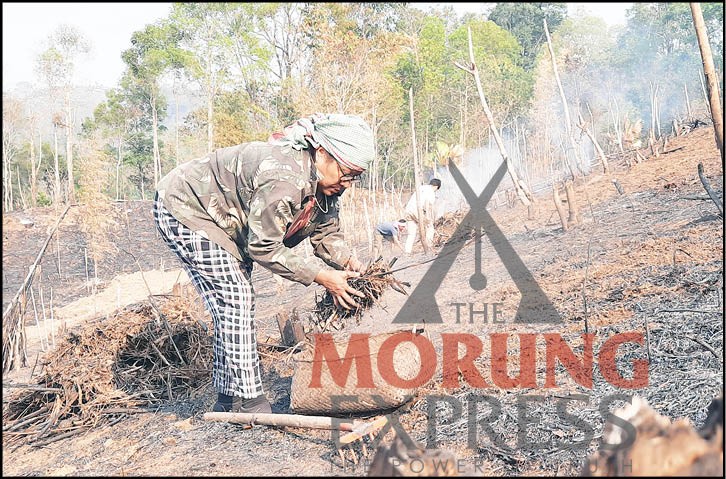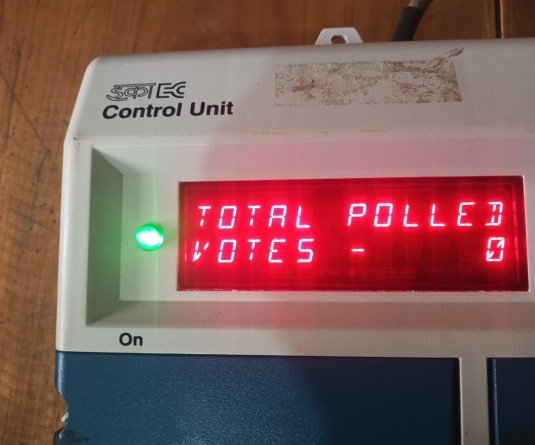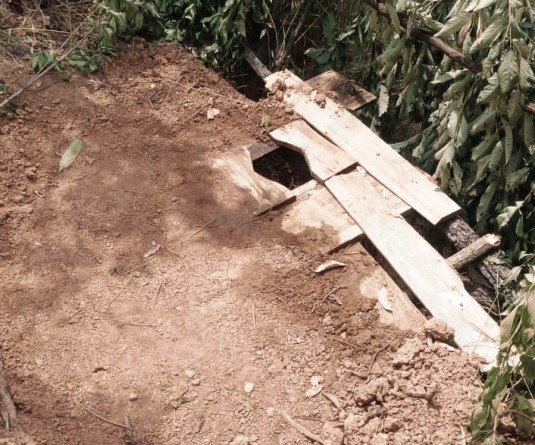A woman clears debris and works at her new jhum field days after the field was burnt at Mokokchung village. (Morung Photo)

Limasenla Jamir
Mokokchung | March 26
When the lockdown began at this time last year, Watimongla, a housewife and mother of two sons didn’t imagine that she would go back to farming a jhum field. Watimongla lives in Ungma village and it has been more than fifteen years since she and her husband had a jhum field.
“Last year during the lockdown, the most difficult task was to stock ration for the family. With almost no farmers left in the village it was very difficult to get vegetables and rice. This year, my husband and I decided to farm a jhum field because if anything like 2020 happens, we want to at least grow enough vegetables for the family,” Watimongla said. She stated that the number of jhum farmers have considerably increased this year.
In 2020 the number of jhum farmers was 13, which increased to 119 in 2021, according to Lolentoshi Longkumer, Lead Farmer from Mokokchung village. “This year the jhum field is very near to the village with excellent road connectivity therefore there is an extreme increase in the number of farmers,” he informed.
“We are farming after a gap of almost fifteen years. The problem with less farmers in the village is the unavailability of seeds for sowing. We had to buy rice seeds from Longkong village for Rs 200 per tin, which otherwise would have been easily available in our village,” said Alemla Longkumer of Mokokchung village.
Another farmer, Arenla from Longkhum village, shared incidents about how some villages have no seeds stocked in the village granary because there are no jhum farmers in the village and how they had to go about asking for seeds from other villages.
However, the lockdown was a blessing in disguise for many farmers in Longkhum village. “Last year we could sell our vegetable produce, especially tomatoes, at a higher rate and in plenty because there was limited supply of vegetables from Assam. The buyers would come till the village gate to collect the vegetables saving us from extra expenses like taxi fare and loading unloading charges,” Kipangba, a farmer from Longkhum village said.
“Every year almost half of our produce rot because we do not have storage facility in the village. However, last year due to the lockdown, we were able to sell all of our produce and not only that the demand was more than our supply,” added Amongla another vegetable farmer from Longkhum village.
For those villagers that owned vegetable and jhum fields, the lockdown was a blessing because they could sell and earn more than they normally would.
“Last year when the lockdown happened, the Mokokchung Cart helped us by coming till the village gate and collecting our vegetables and buying from us. Our biggest worry was to sell our produce because there was no transportation available, but because of Mokokchung Cart, we could sell and earn,” said a farmer from Mongsenyimti village.
In 2021 there is an increased trend in the number of farmers in many of the Ao villages.
“What our villagers have learned during the lockdown is that we need to go back to our land because we belong to the land and the land will provide. If anything like 2020 happens, if we have a farm or a jhum field, we can grow and produce food that will at least meet our ends. We realized that we need to stop depending on Assam market for everything,” said Apokba, a farmer from Ungma village who has cultivated two tins of rice in his newly burnt jhum field.





